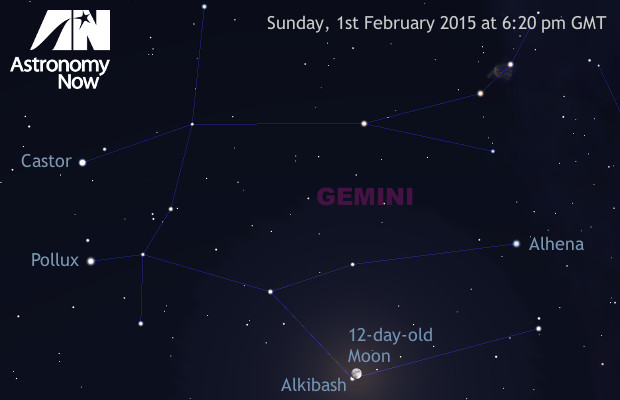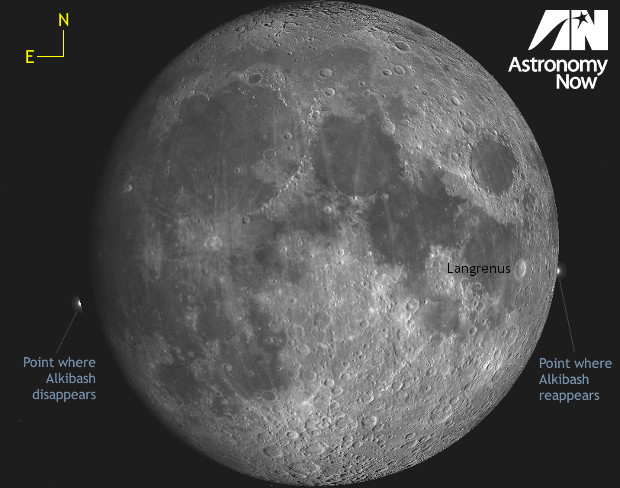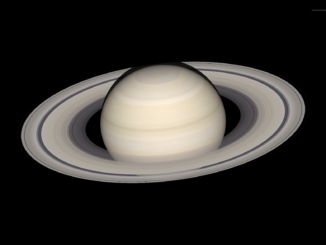
Although λ Geminorum is normally an easy naked-eye star, the proximity of a nearly Full Moon will mean that powerful binoculars or a small telescope will be required. For telescope users, what’s noteworthy about an occultation of Alkibash is that it’s a 9.6-arcsecond double star; the westernmost component will disappear first, closely followed by the companion star.
As a rule of thumb, the further west you live, the earlier the event will occur, and vice versa to the east (the predicted disappearance at London is 6:23:24 pm and 6:26:24 pm in Edinburgh). So, be prepared with your telescope and sitting at the eyepiece about 5 minutes before the event to watch the approaching limb of the Moon.
The reappearance of a star from occultation is somewhat harder to prepare for as you don’t know precisely where it will happen! This will occur close to 7:32 pm for the mid-British Isles (7:31:12 pm London; 7:35:36 pm Edinburgh). As with the disappearance, the further west you live, the earlier reappearance will occur, and vice versa to the east.
Fortunately, we can take advantage of the fact that Alkibash is a double star, extending what would normally be a virtually instantaneous reapparance into one lasting a second or two for both stars. Clear skies and good luck!



